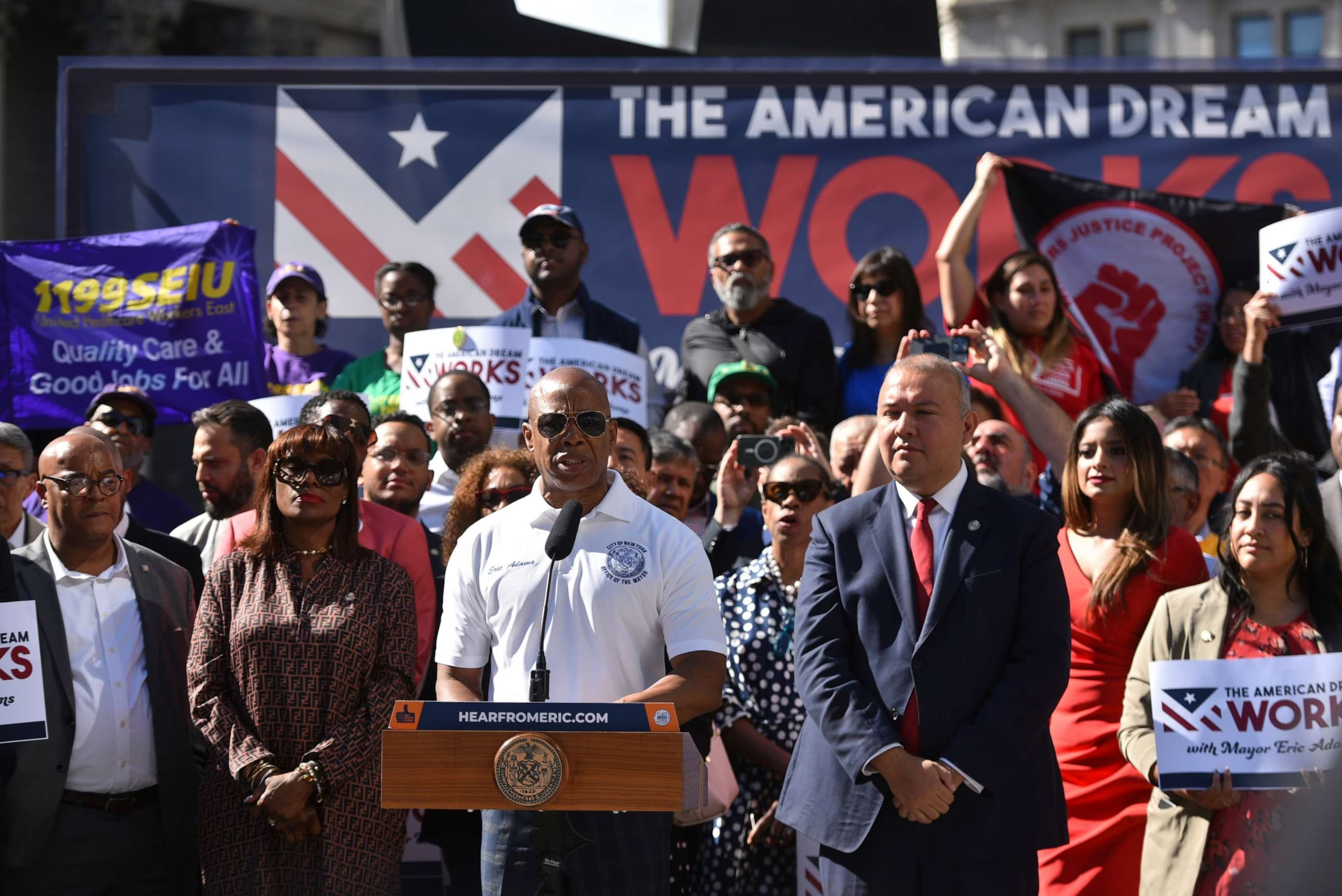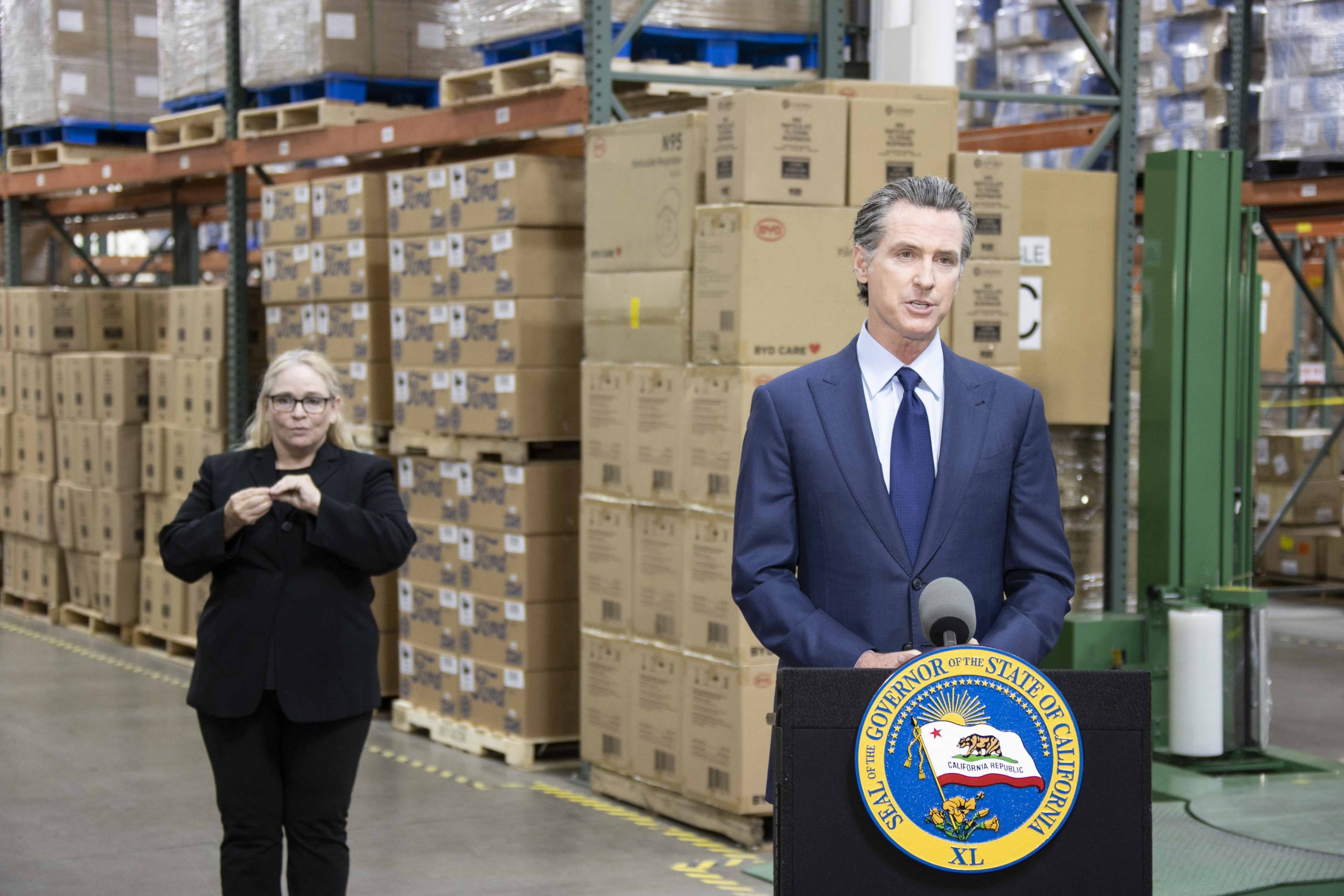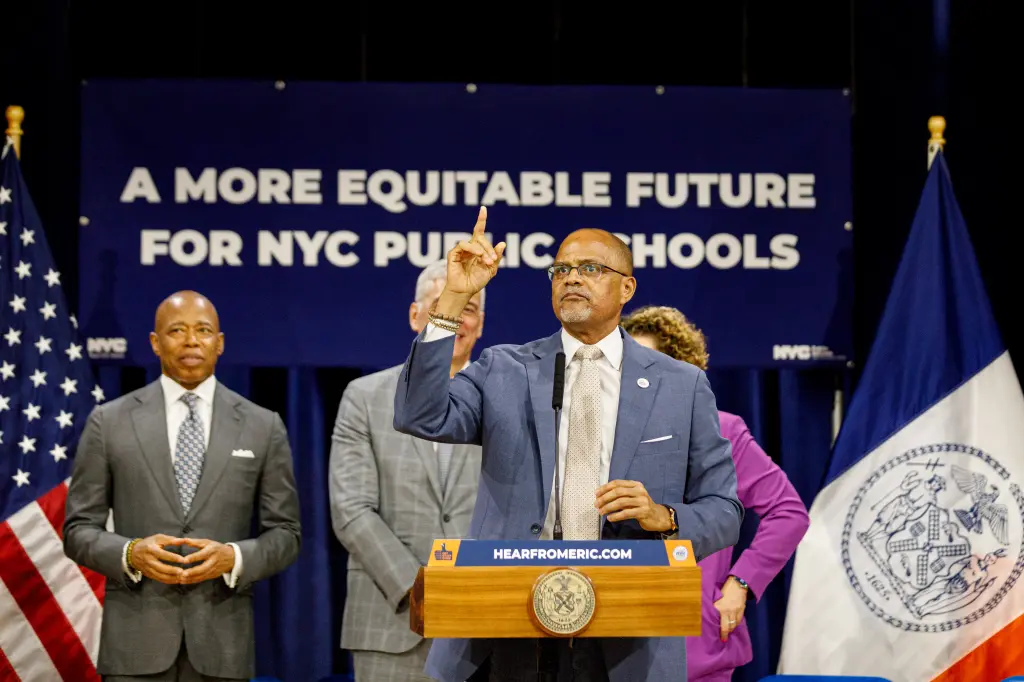All Agencies to Submit PEGs in Response to Risks Posed by Rising Asylum Seeker Costs with COVID Funding Ending, Revenue Growth Slowing
Our Bureau
New York, NY
New York City Mayor Eric Adams today announced several steps to stabilize the city’s finances given the convergence of circumstances threatening New York City’s financial stability. Because the city has been forced to bear most costs of the asylum seeker humanitarian crisis at a time when revenue growth is slowing and COVID-19 stimulus funding is sunsetting, the city faces substantial fiscal disruption if circumstances do not change.
Since the beginning of the asylum seeker crisis, New York City has taken urgent action, opening more than 200 emergency shelters for more than 110,000 migrants who have arrived in the five boroughs seeking shelter. Today, with approximately 10,000 asylum seekers still arriving each month, the city estimates this mounting crisis will cost taxpayers $12 billion over three fiscal years — an amount that will continue to grow without federal and state intervention and support. In an effort to maintain the city’s fiscal strength, the Adams administration is actively working to reduce housing and other costs by transitioning migrants out of the shelter system and humanitarian emergency response and relief centers to more cost-effective shelter, in addition to looking closely at other ways to reduce the costs of caring for the asylum seekers.
The administration will also be taking additional actions to control spending and promote budget savings that will be announced in the near future. Mayor Adams has been clear, however, that these costs may affect every city service. As such, earlier today, he directed every agency to implement a 5 percent reduction in city-funded spending in each year of the financial plan through a Program to Eliminate the Gap (PEG) as part of the upcoming November Plan, Preliminary Budget, and Executive Budget. The administration will seek to minimize disruption to programs and services, and there will not be layoffs.
“Since the large influx of asylum seekers to our city began last spring, we have warned New Yorkers that every city service could be impacted by this crisis if we did not get the support we needed. Coupling the costs of a national crisis that has fallen onto New York City with COVID funding that is running out and reduced revenue growth, our city’s financial future may be at risk if we do not act,” said Mayor Adams. “Our city continues to receive approximately 10,000 asylum seekers each month, and, as we laid out last month, we anticipate spending $12 billion through the end of Fiscal Year 2025 if circumstances do not change. While our compassion is limitless, our resources are not. This is a sobering fact, and that’s why today’s decision was not made lightly. At this time, we are asking all of our agencies to submit a plan to reduce their city-funded spending in each year of our financial plan, but the die is not yet cast. If we can get the substantial support we need from our federal and state partners, we can avoid these funding reductions. We need Washington and Albany to finally do their part by paying their fair share and coming up with a decompression strategy that reduces the pressure on New York City, so we are not forced to manage this crisis almost entirely on our own. We also continue to raise our call for expedited work authorization and comprehensive immigration reform to immediately address this crisis.”
“Our administration has always led by following the facts to make the most informed decision,” said Chief of Staff Camille Joseph Varlack. “With a $12 billion forecast and an average of 10,000 asylum seekers still coming to New York City every month, the facts show that this administration must make this difficult decision to stabilize our budget. However, the message from day one remains the same — this is a national problem that demands a national solution. While New York City has led the nation by doing its part in welcoming, sheltering, and caring for asylum seekers, we need everyone impacted from New York State to the national government to now play their part.”
“Desperate times call for desperate measures, and these are desperate times,” said Chief Advisor Ingrid P. Lewis-Martin. “The federal government has all but abandoned New York City, and the state is not doing its fair share to assist New York City, which is managing a federal humanitarian crisis on a municipality’s budget. As a result, our administration has to make tough decisions.”
Last month, Mayor Adams unveiled an updated forecast for asylum seeker costs, showing that the asylum seeker population has grown faster than previously anticipated and that absent additional state and federal support, the crisis could cost the city more than $12 billion over three fiscal years. This figure represents almost triple the city’s previous $3.9 billion estimate for two fiscal years, which was funded in the city’s financial plan. This means that, without additional state and federal support, the city will need to add another $7 billion to the financial plan over this year and the next to meet rapidly expanding needs.


























